A few decades ago, Duisburg was a waning industrial city in the Ruhr Area. Its economy was virtually at a standstill and tourists were nowhere to be seen. Fortunately, they decided to do something about that. Today, Duisburg’s industrial heritage is protected, several vacant sites have been transformed into tourist attractions, and nearly abandoned industrial areas were revitalised. Duisburg is alive again, and Trot Op! planned a weekend to experience its rebirth first-hand.
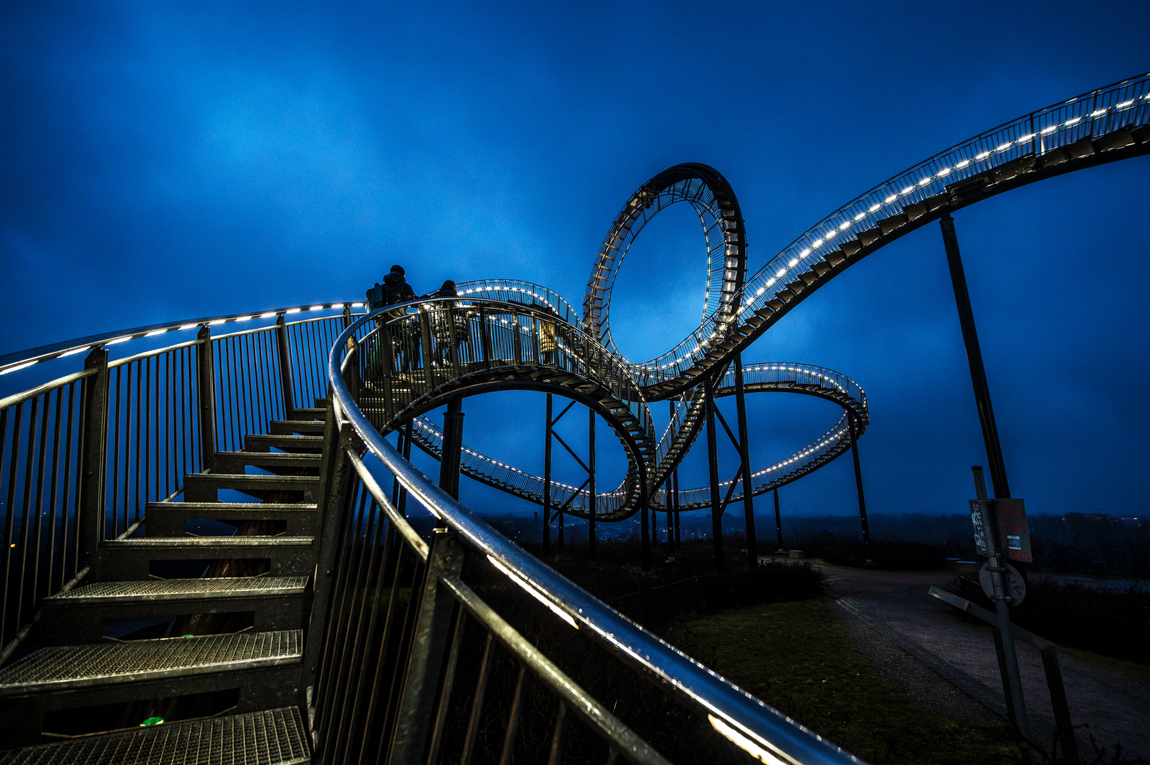
There’s a real chance that if you want to book a holiday in Germany, you will not immediately think of the Ruhr Area as your first option. The lush forest trails and picturesque little villages of say, the Black Forest, simply appeal to the imagination a little more than the smoking chimneys and blast furnaces you will mainly encounter here. After the industrial revolution, the region grew into one of the most important industrial areas in Europe. For more than a hundred years, the Ruhr was both the engine of German industry and the black lung of the country. Nowadays, this heavy industry is running at a much slower pace, but the mining towers and chimneys are still there.
“Duisburg will probably never become the most beautiful city in the world, but in twenty years it transformed from a dilapidated industrial city into an interesting city trip destination.”
Duisburg was one of the main hubs of that industrial engine. The city still has the largest inland port in Europe – which you can visit yourself by booking a harbour tour by the way. Duisburg went through an economic boom in the early 20th century, but that also had its consequences. Because of its industrial importance, the city was heavily bombed during World War II. As a result, most of the centre had to be rebuilt, and this was done with what is called “mixed success”. The old town became a mishmash of all kinds of styles. As the mines and factories began to close down from the 1970s onwards – as in the rest of Europe – the economy in Duisburg came to a virtual standstill. It became a city of past glory: the warehouses in the inner harbour stood empty and unemployment was rampant. Duisburg – like so many other former industrial cities – was on the brink of collapse and needed a breath of fresh air. Fortunately, that breath eventually came and nowadays everything looks much better.
What to do in Duisburg: 7 top sights in the Ruhr Area
In order to transform the entire region and give it a new drive, a ten-year plan was drawn up at the end of the 1980s (for those interested: the IBA Emscher Park project). This had to lead to a better living standard and environment for the inhabitants of this highly urbanised area. An important aspect of the plan was that vacant industrial heritage should be preserved as much as possible, and given a new purpose. In this way, the image of the entire Ruhr Area would gradually get boosted. The impact of the plan can still be seen today. Old factories and silos were transformed into museums and industrial recreation parks; new public art installations were unveiled and vacant areas were redesigned with a mix of living, working and leisure space in mind. The neighbourhoods that were once urban blights, where turned into social and creative hotspots. Duisburg is still not the most beautiful city in the world, and most likely never will be. But in the course of about twenty years, it transformed from a dying industrial city into an interesting city trip destination full of renewed confidence. In the skeletons of the old factory buildings, you can now enjoy culture and leisure. This is great news for all of us, because Duisburg is only an hour or two away from Antwerp. Let’s have a look there right away, I thought. And lo and behold: so it happened.
1. Duisburg: a walk through the city centre
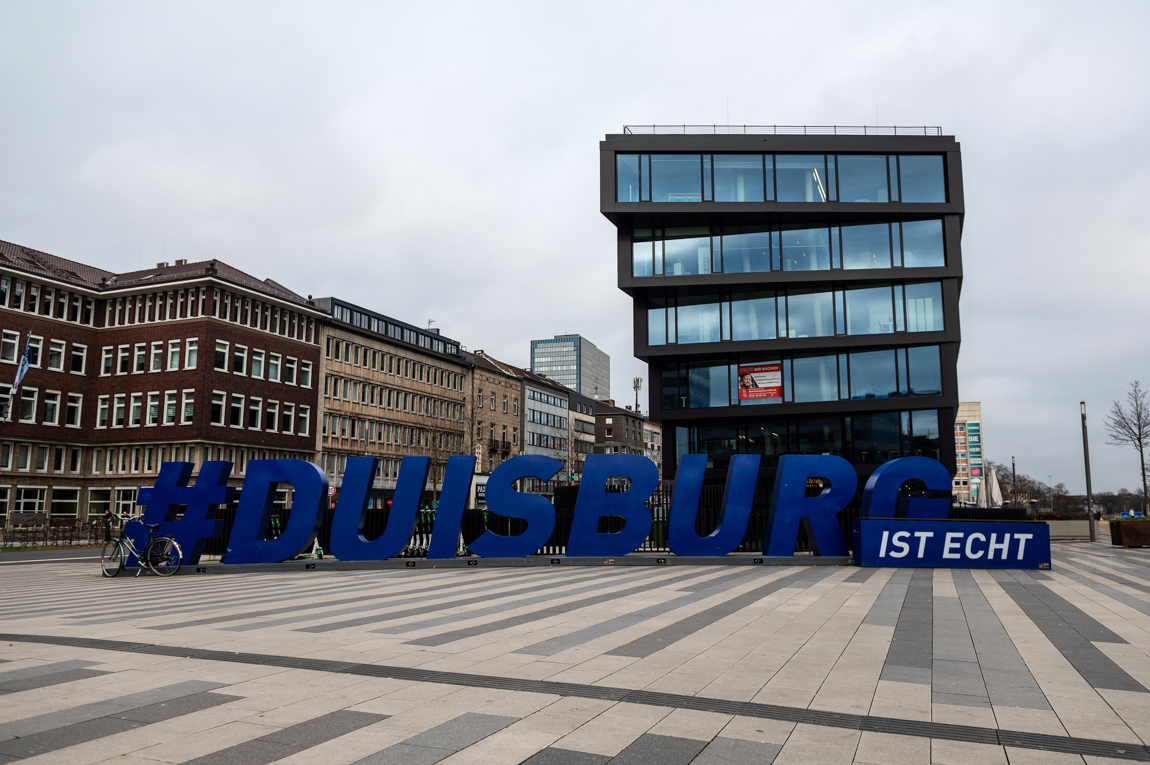
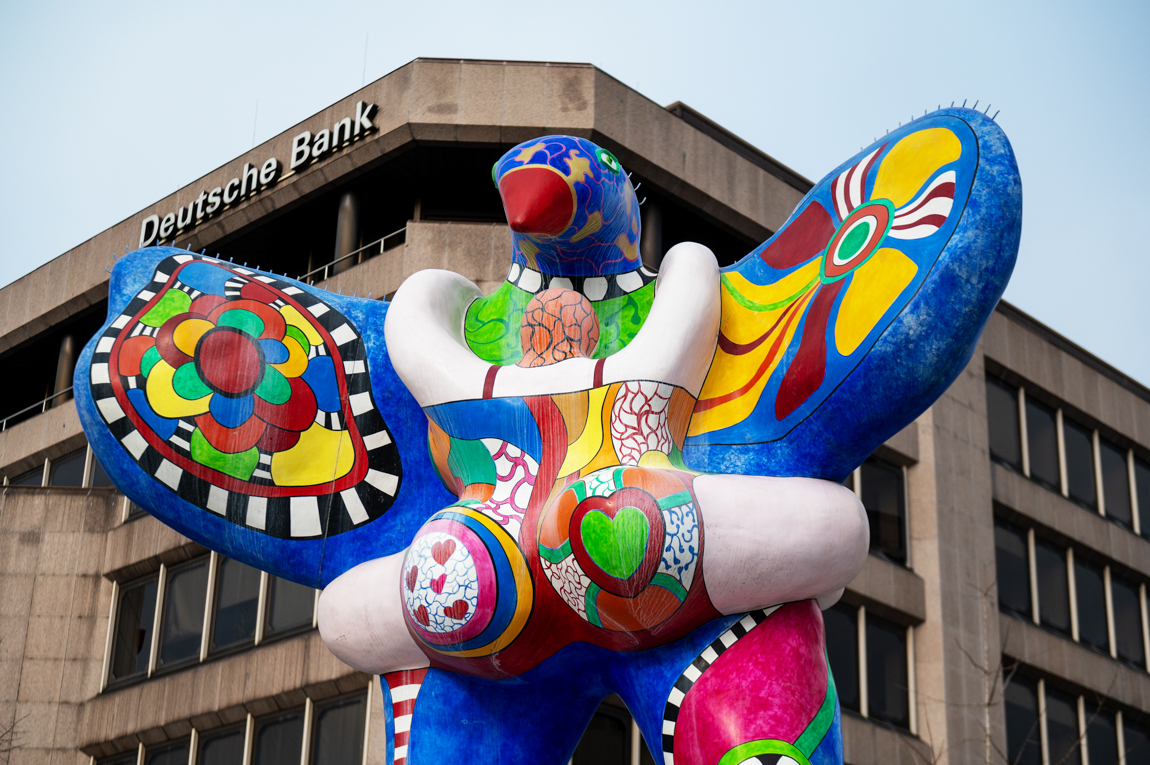
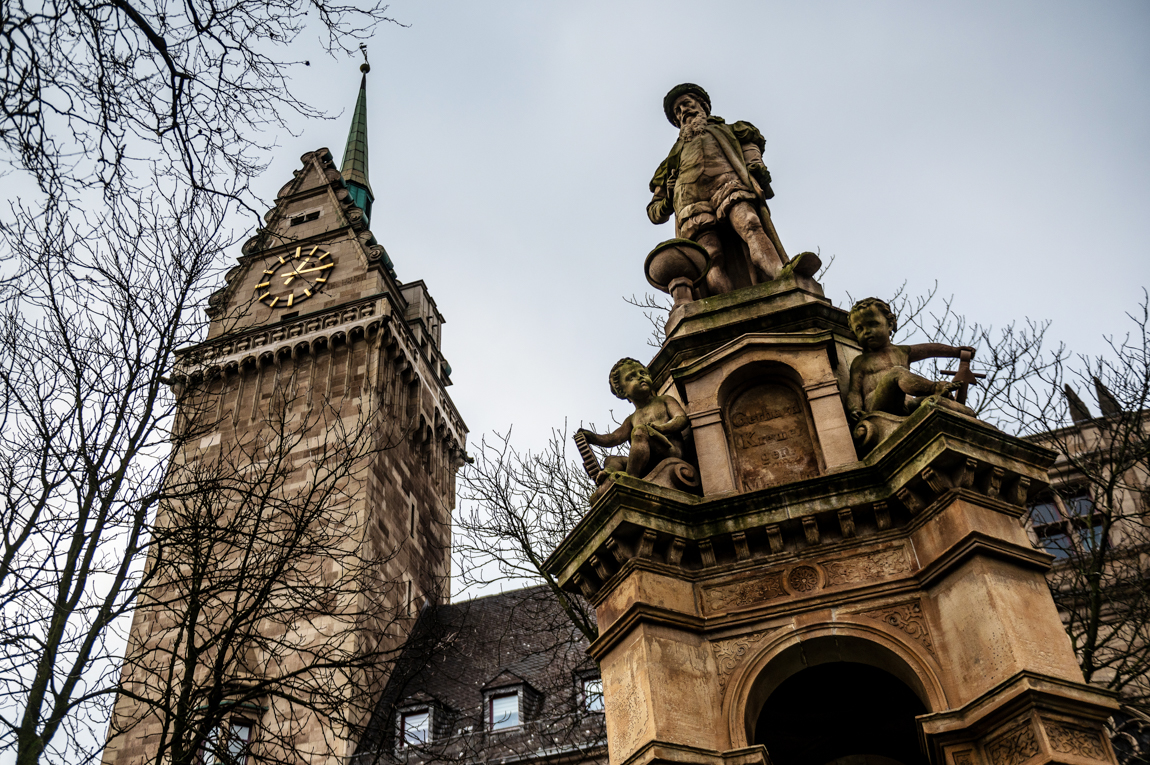
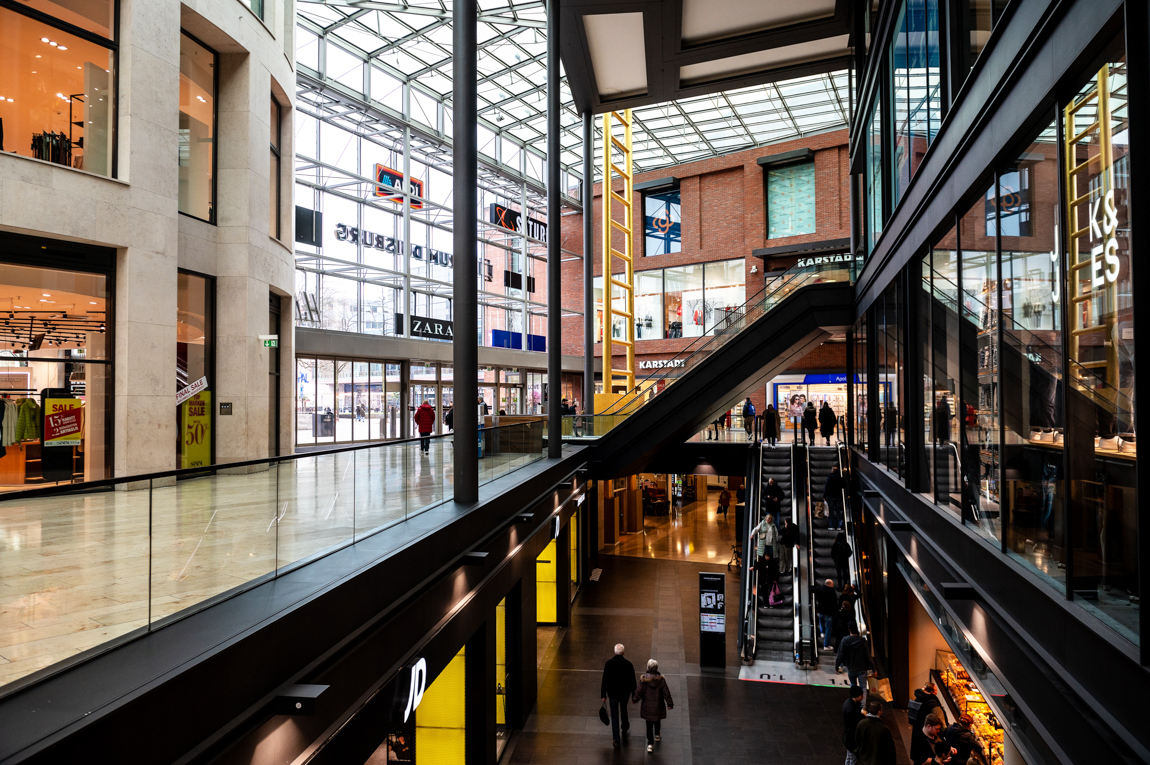
No, Duisburg will never win any beauty contests, but its city centre is alive. Compared to about forty years ago, that fact alone is pure profit. If you arrive in Duisburg by train, you’ll find yourself on the huge open square in front of the station. This is not exactly the Piazza Navona, but they did install “#Duisburg ist Echt” on it in big blue letters. This teaches us two things: 1. this is not a dream, and 2. at least we didn’t get off at the wrong station. Perfect. Near the station square lies Königstrasse. This is Duisburg’s pedestrianised main shopping street. In this street alone, you can visit three large modern shopping malls – the city centre also reinvented itself as a destination. Quite a lot of public art was put in Königstrasse to cheer things up a bit. The Lifesaverbrunne is the most controversial artwork of the lot: a five-metre-tall, colourful bird hugging a fat woman in a bathing suit. Not everyone in Duisburg is wild about it, but it does attract crowds – and cuddling some weird bird never killed anyone. Apart from the Salvatorkirche and the imposing town hall, there’s not much extraordinary architecture to discover in the city centre. Although it’s quite pleasant to wander through and there are numerous shops and restaurants to explore, Duisburg’s biggest attractions for tourists are outside the centre. And when you walk through the old town from the station for half an hour, you’ll soon end up at the first one.
2. The Innenhafen: a city harbour with a new vibe
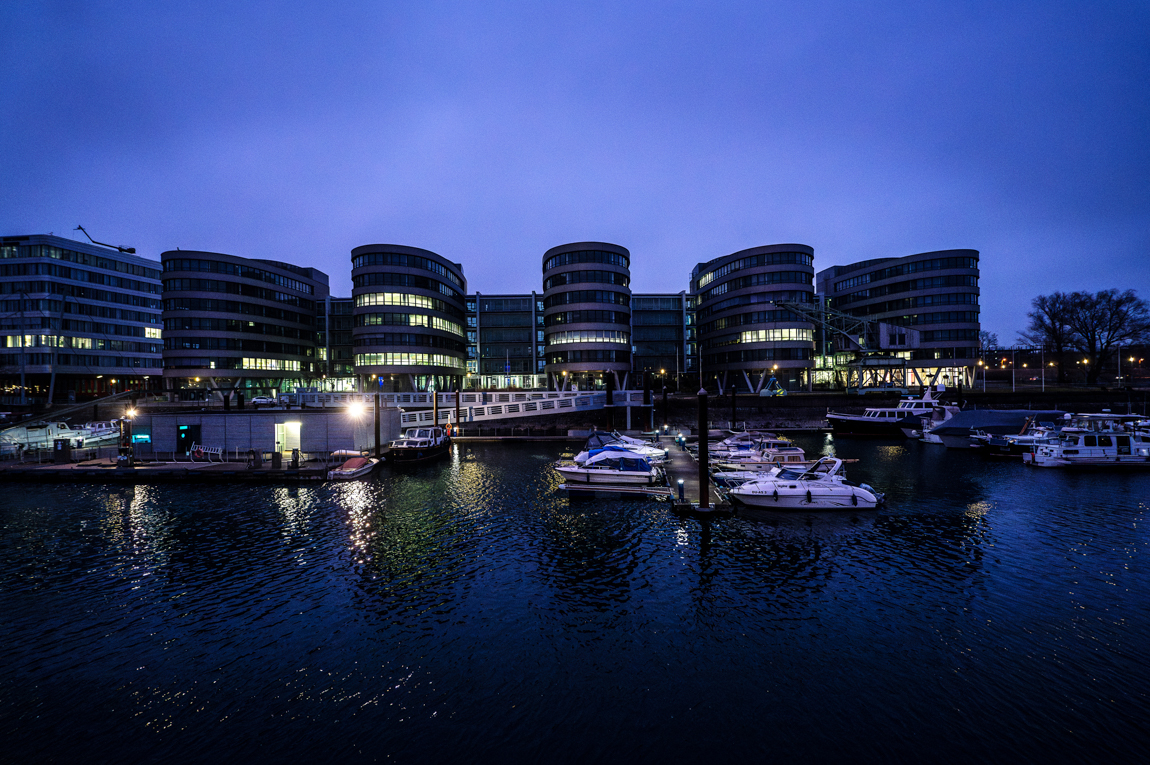
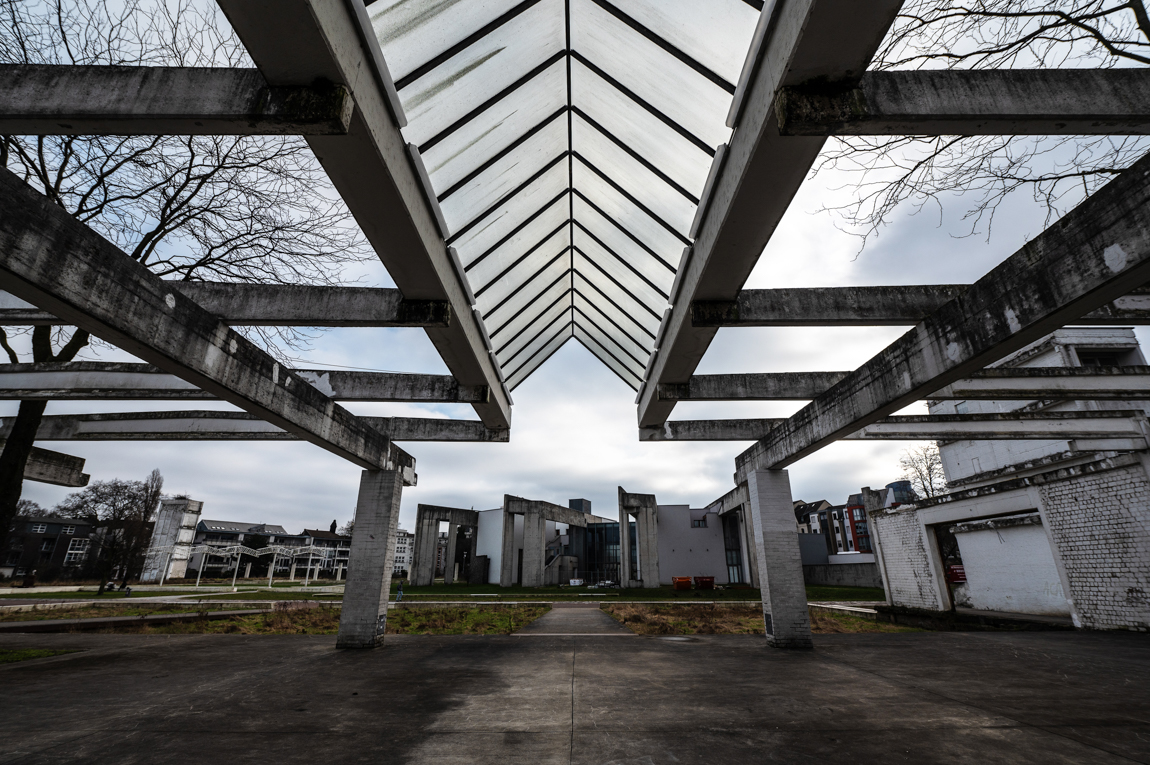
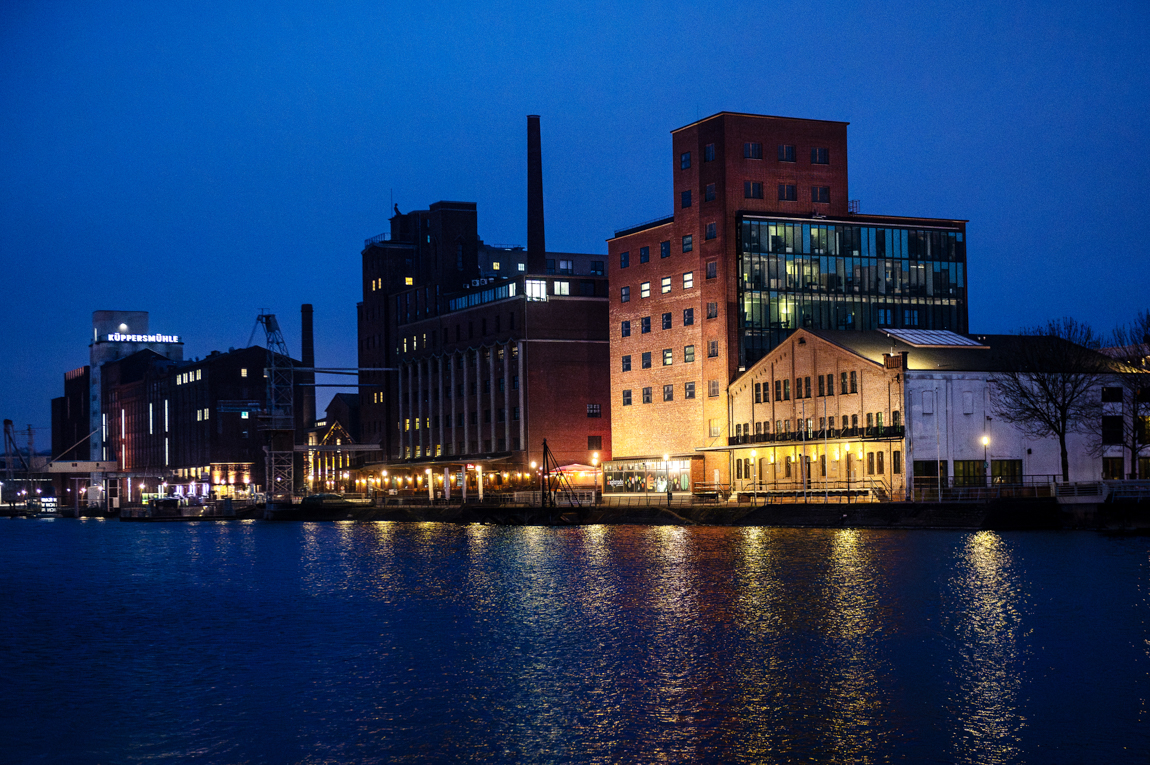
The Innenhafen is the part of the Duisburg harbour closest to the city centre. This was once the bread basket of the whole Ruhr Area, and the docks are full of old grain silos. When the renewal plan started to get implemented in the 1980s, only three companies were still active here. The area has been thoroughly overhauled and now looks completely different – without erasing the past that made it so successful in the first place. Empty silos were given a new life as restaurants, museums or sports centres, and the buildings that could no longer be saved were knocked down and replaced by modern and often creatively designed new ones. The Innenhaven is now the hippest part of Duisburg and the place where many locals go after work. There’s a marina full of small boats, the many restaurants are doing well and festivals and other events are regularly organized here. Parts of the almost collapsed old hangars were transformed into the Garten der Erinnerung. This is a green park that serves as a social space, where dancing and sports lessons are given. The remains of the old buildings are now used for exhibitions and performances, and they even opened a new synagogue here.
3. MKM Museum Küppersmühle: modern art in a grain silo
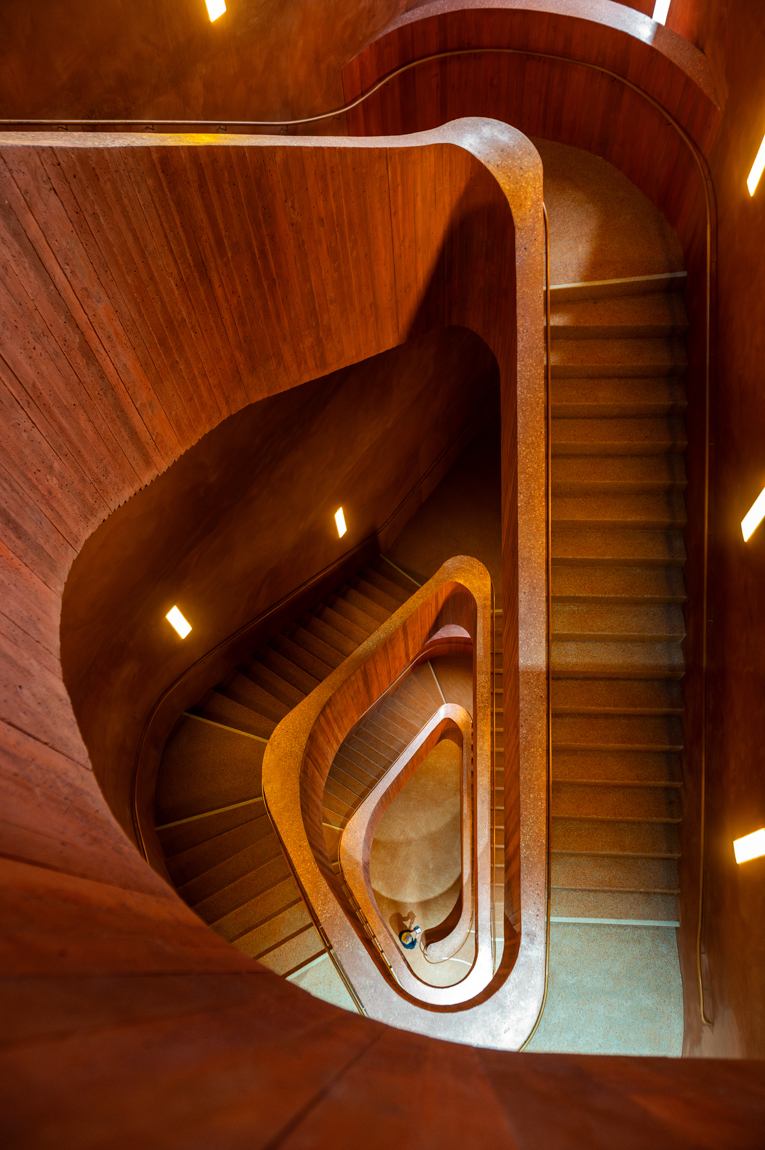
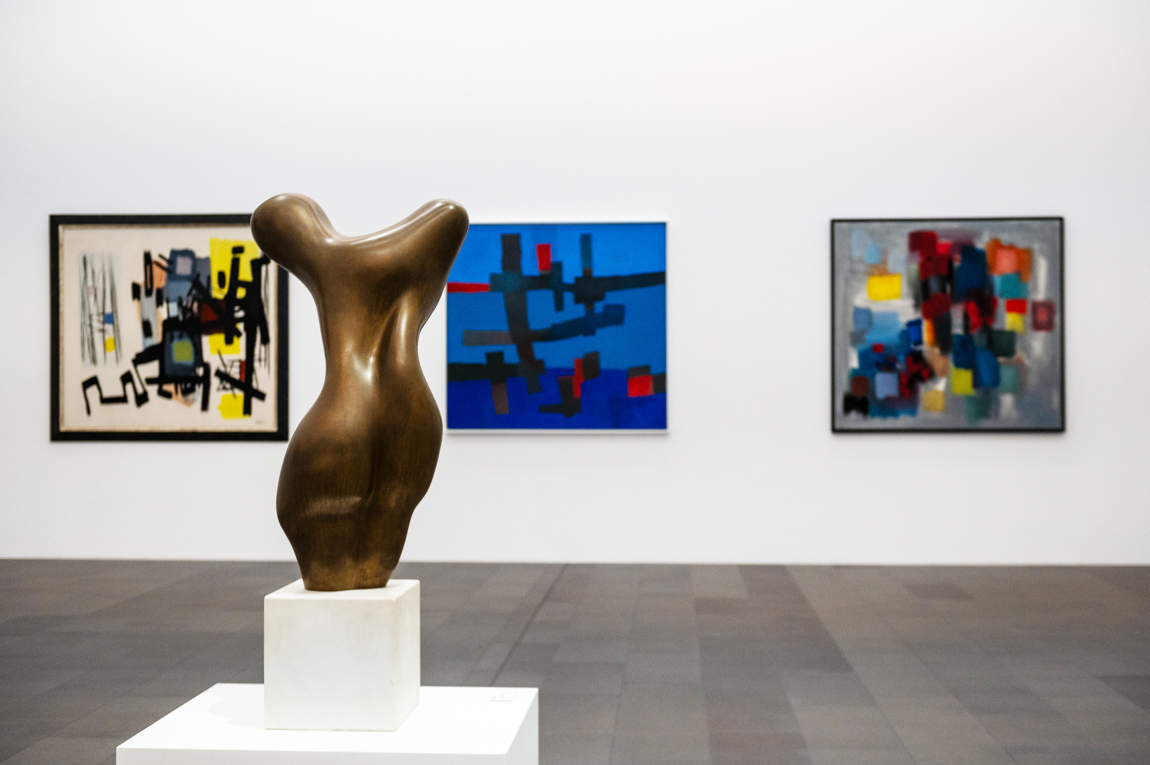
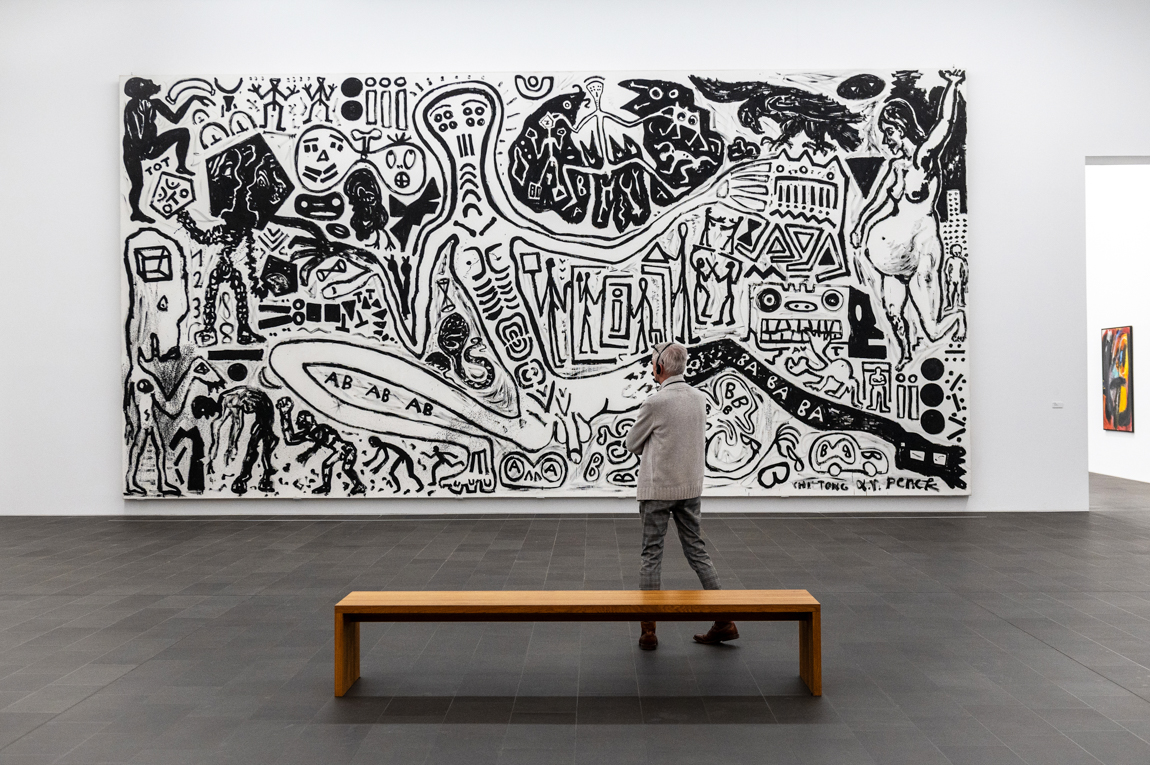
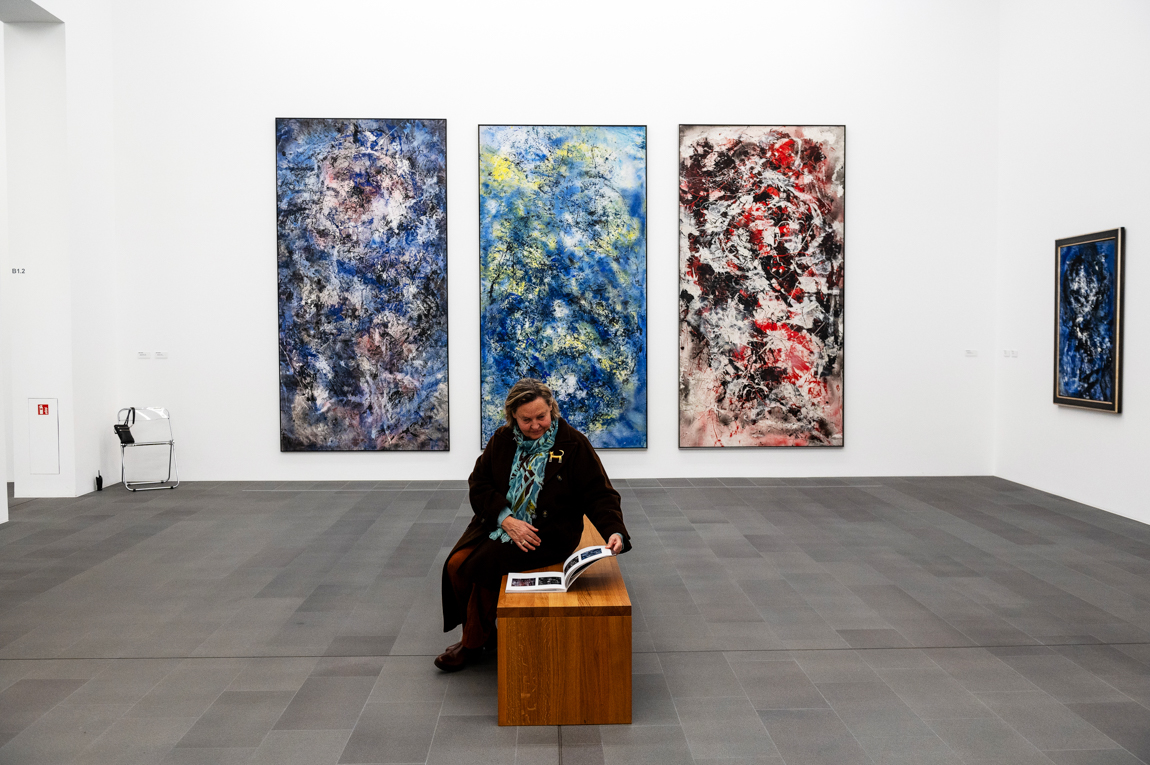
Museum Küppersmühle is one of the best examples of how industrial heritage can be given a new life with respect to the past. This massive old grain silo in the Innenhafen was converted into one of the largest museums of modern art in Germany. Mainly post-war German abstract paintings are exhibited in all shapes and sizes here. This branch of art is far from my expertise and I barely recognised any names, but I am of course not a post-war German and the collection was impressive and varied anyway. Perhaps even more impressive than the extensive art collection is the actual building. It was renovated by the architectural firm Herzog & de Meuron and is a work of art in itself. Modern white showrooms merge into the building’s original structures: large concrete columns and steel grain silos dozens of meters high. The crown jewel of the renovated building is the graceful wooden staircase that curls up like a snake for five floors. Works from the Haniel collection are currently on display on the ground floor of the museum. About a hundred paintings are showcased here, all from the private collection of a rich Duisburg family. The works have never been shown to the public before. Is all this cultural splendour making you hungry? No problemo. The Küppersmühle Restaurant is one of the best and most prestigious in the city.
4. The Lehmbruck Museum: a sculpture treasure trove in the centre
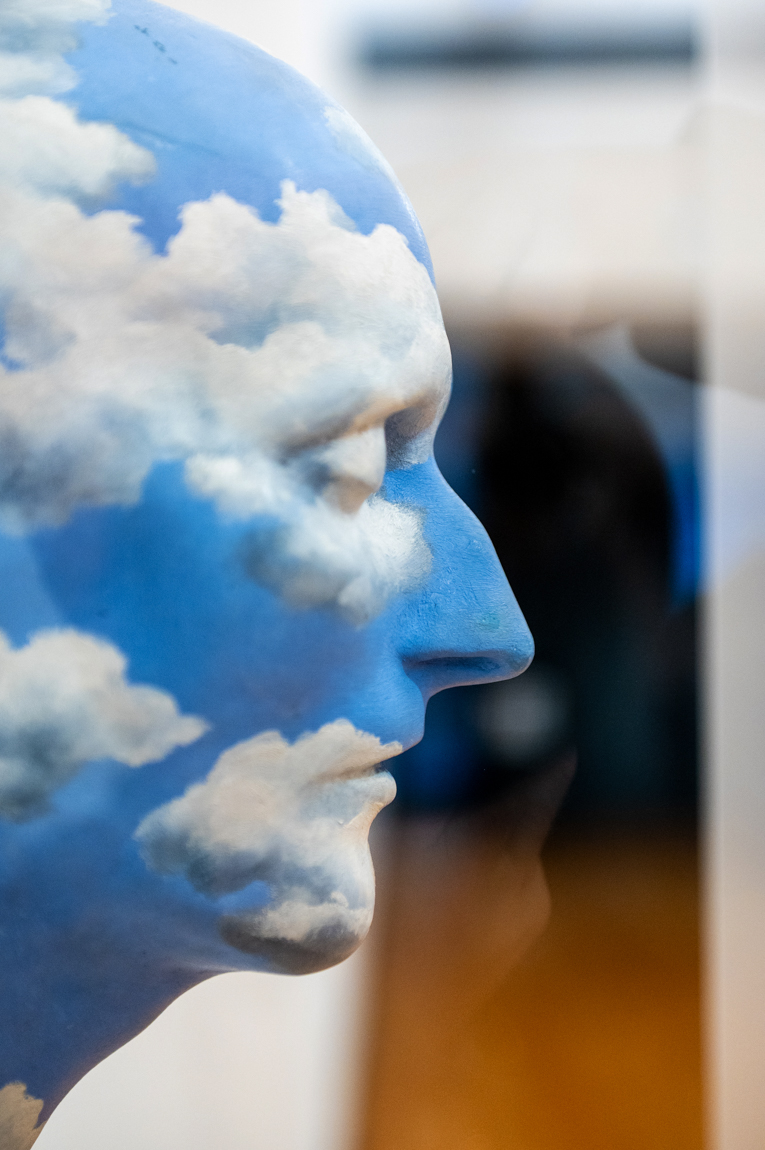
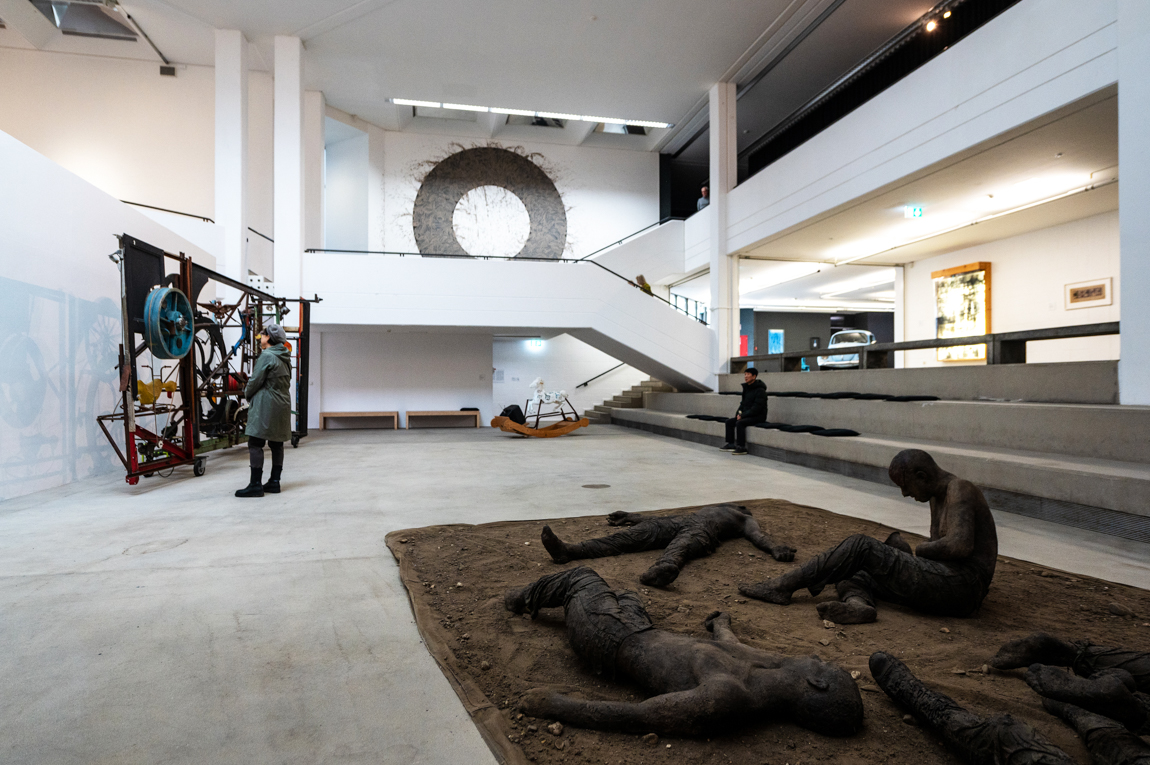
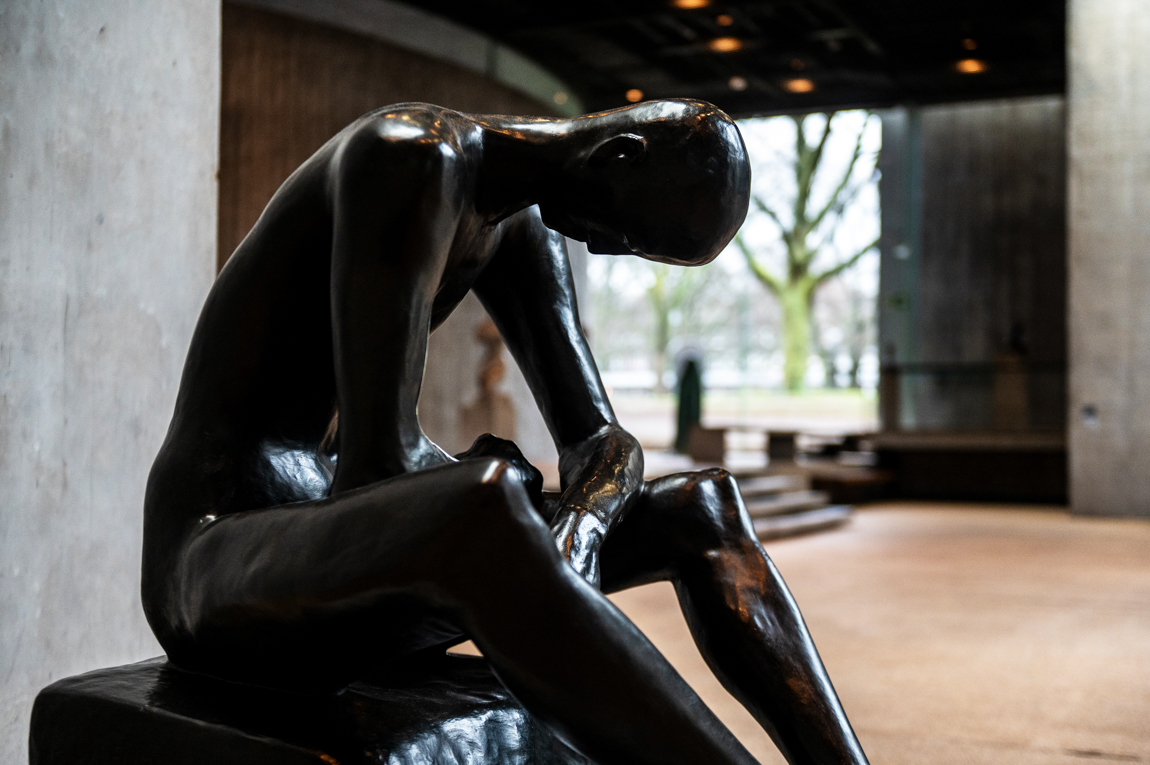
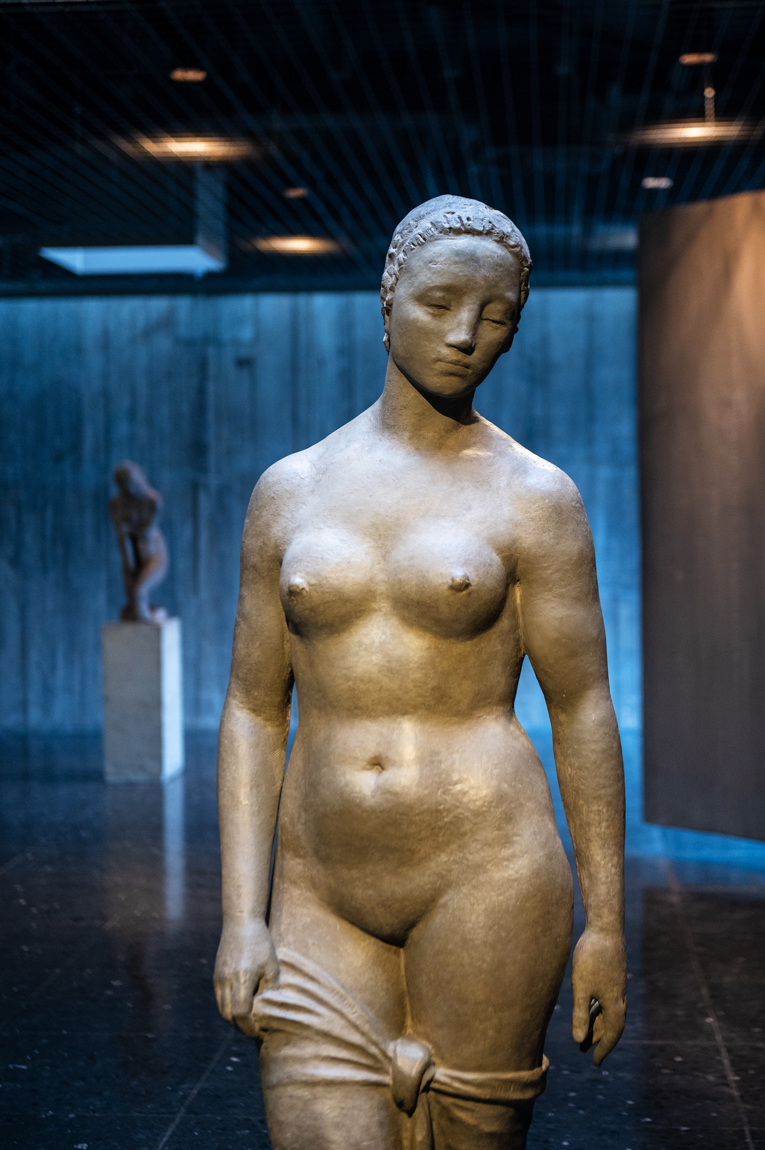
The Lehmbruck Museum may be somewhat less familiar to most visitors to Duisburg compared to Museum Küppersmühle, but it’s more than worth a visit as well. It’s located in the beautiful Kant Park – which itself is full of sculptures – and was opened in honour of German sculptor Wilhelm Lehmbruck. He made his art in the early 20th century and eventually ended up as a tragic figure. His early work is quite traditional, and can even be compared to the classical Greek statues. When he then had to serve in the trenches of WWI for years, it changed his style – and his peace of mind – quite extremely. His later art feels much darker, and his subjects are depicted as a kind of stretched-out, anonimous silhouettes. The man barely lasted a year after the war. He was married, but fell hopelessly in love with actress Elisabeth Bergner – one of his models. She didn’t care about the man’s advances and so he decided – artists are strange people – to put an end to his short life in response.
“The Lehmbruck Museum in Kant Park may be somewhat less known to most visitors to Duisburg compared to Museum Küppersmühle, but it’s more than worth a visit as well.”
In the museum, an entire wing was dedicated to his works, and it gives a deep insight into the man’s psyche. The permanent collection also exhibits a lot of top art, including works by Dali, Ernst and even Magritte – yup, he also made sculptures. Currently, there’s a refreshing exhibition by Alicja Kwade running: a Polish-German artist. Surprising and challenging art, which you can walk through, makes you think and sometimes even laugh. A number of her works will remain permanently in the museum, so if you’re here a little too late, don’t despair just yet.
5. Landschaftspark Duisburg-Nord: discover an industrial playground
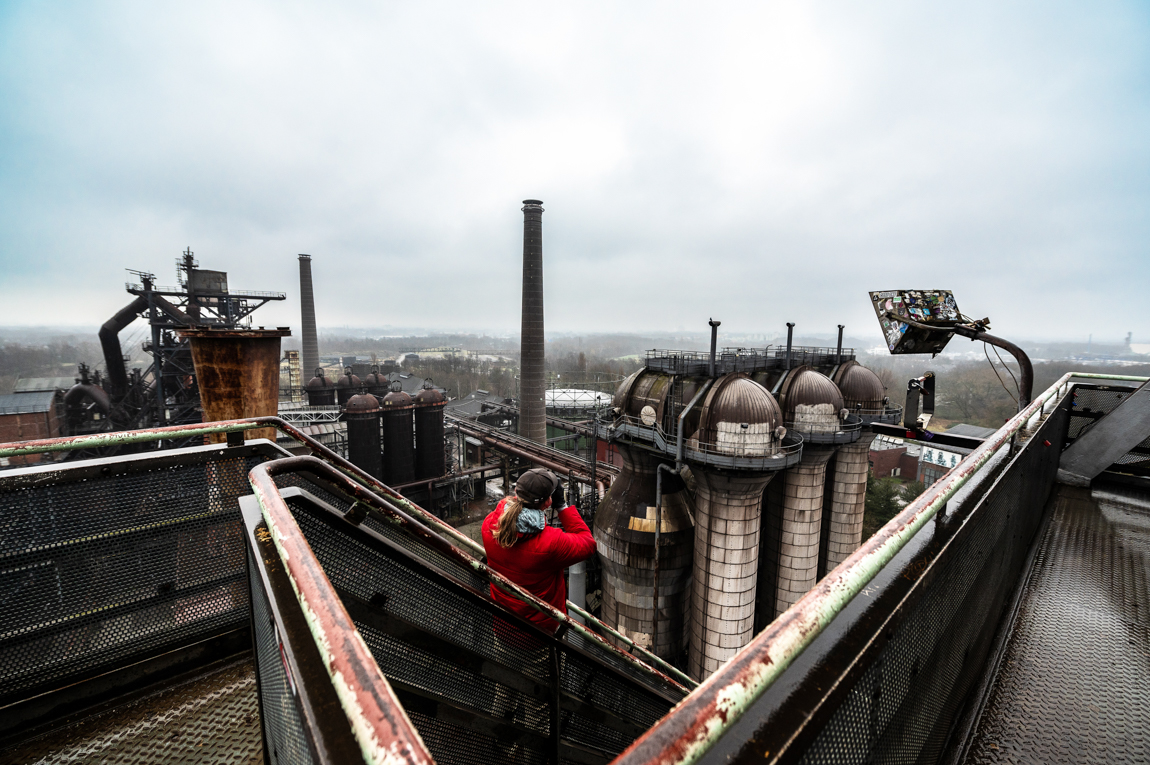
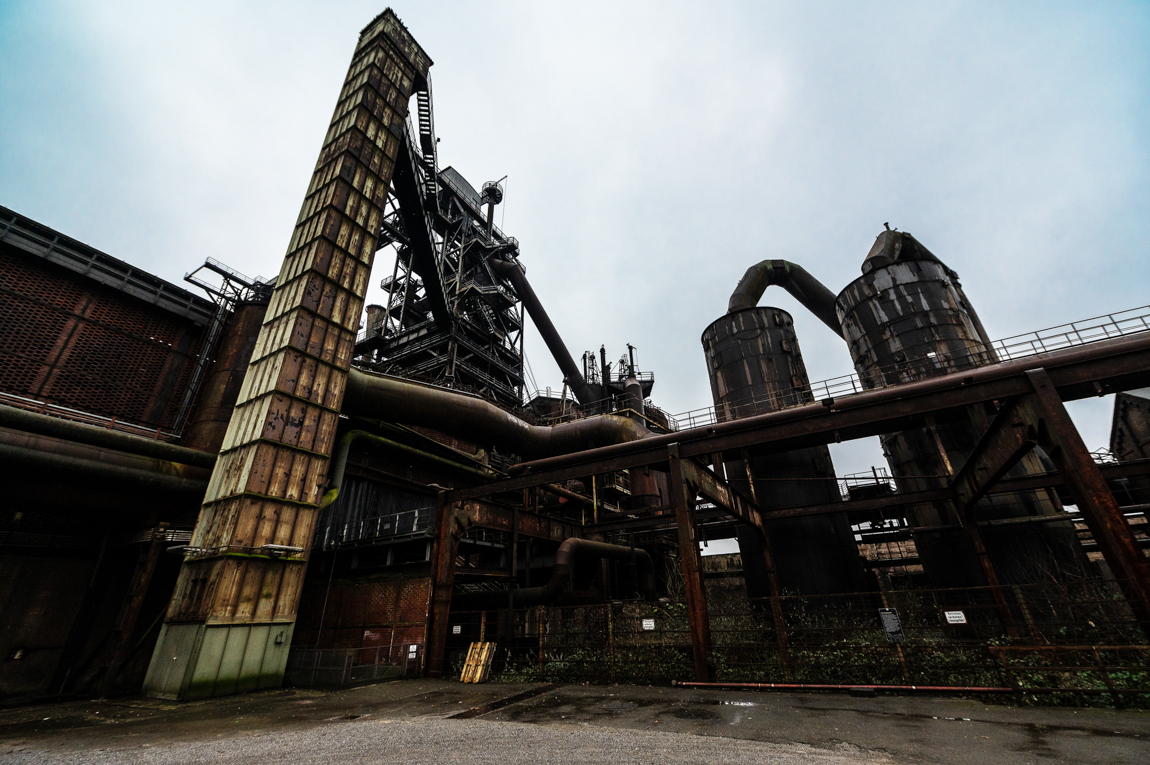
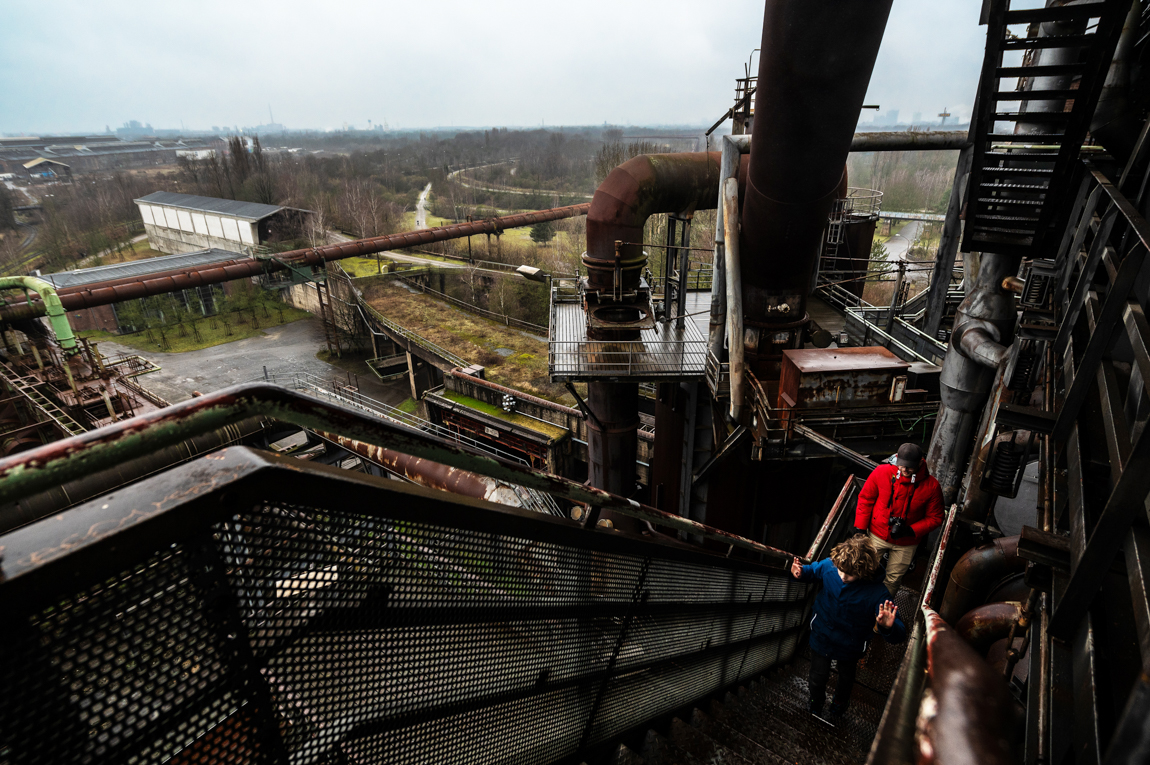
Beautiful things were done with some the industrial heritage a little further outside the Duisburg city centre as well. Landschaftspark Duisburg-Nord is the best-known example. This 200 hectare site was home to a gigantic old steel factory that was shut down forty years ago. The domain was cleaned up, parks, playgrounds and other greenery were added, and the factory itself remained standing but was completely transformed into a combination of an industrial museum and a place for sports and events. You can now cycle, hike or picnic in between the rusty steel constructions, while you can see nature gradually taking its place again. The large gas storage tank now serves as a diving centre; the storage bunkers for iron are now used for wall climbing and in the buildings were iron was cast, you can watch movies or try out a rope course. Operas and theatrical performances take place here, and a skate park and a petting zoo were opened.
“Landschaftspark Duisburg-Nord is an old steel factory that was transformed into a combination of an industrial museum and a park for sports and events. It’s the textbook example of how industrial heritage can be treated with respect.”
The highlight of a visit to Landschaftspark Duisburg-Nord is climbing Blast Furnace No. 5. This is a monstrous steel construction that was melting iron around the clock at 2000 degrees temperatures until the 1980s. The blast furnace can be climbed all the way to the top, and this is a memorable experience. You’ll walk around and even through the construction all the way to the top platform on metal stairs, past all kinds of heavy pipes, cables and cranes. The summit is more than 70 meters high, and only from that vantage point does the real scale of the area become clear. Impressive view.
6. Zoo Zajac: visit the world’s largest pet store
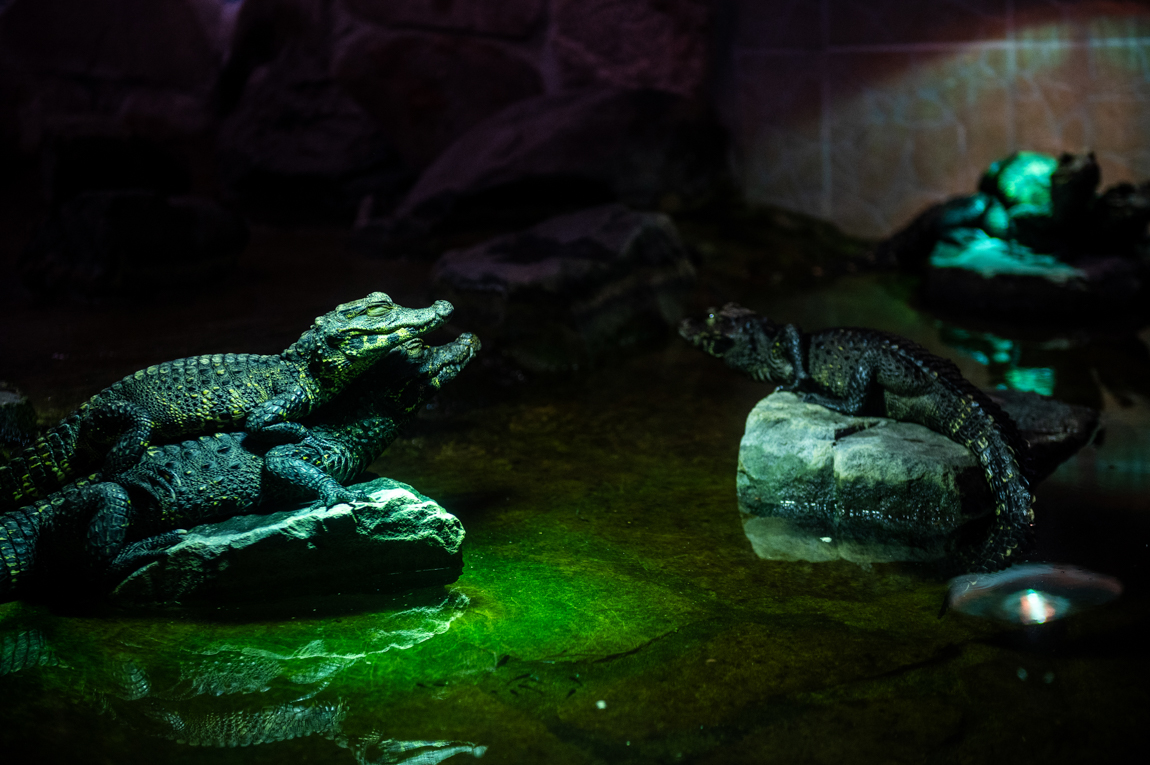
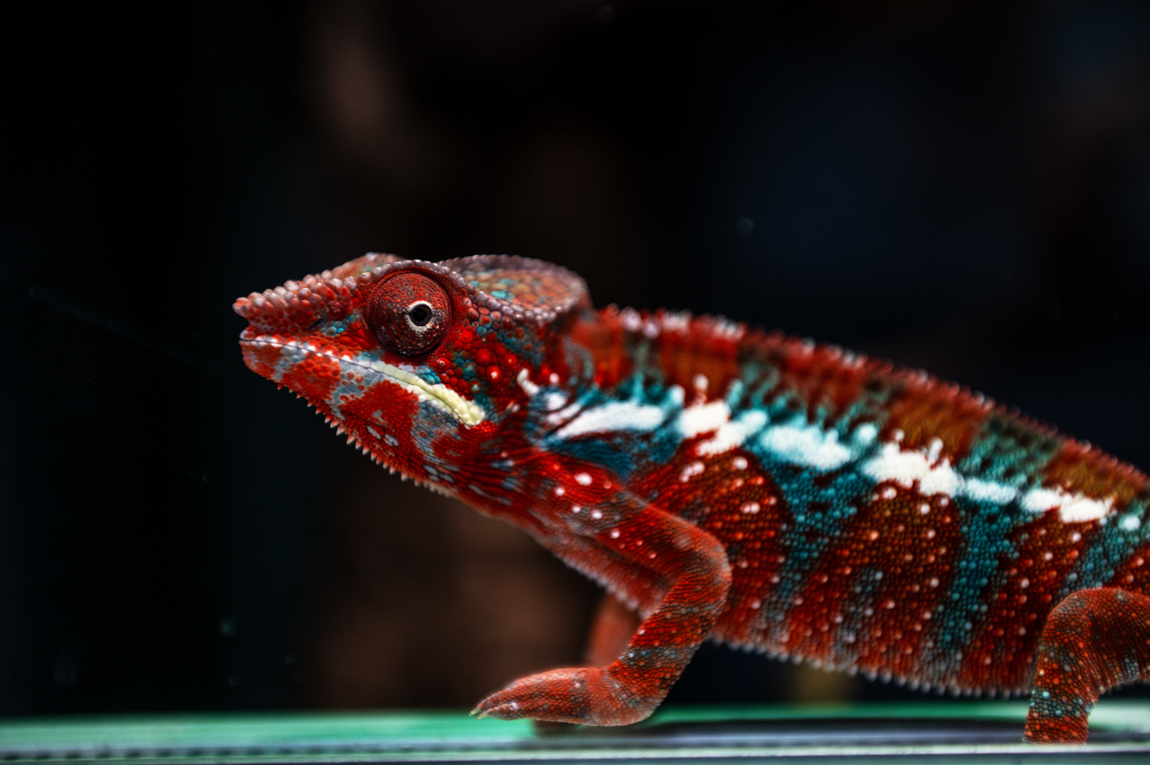
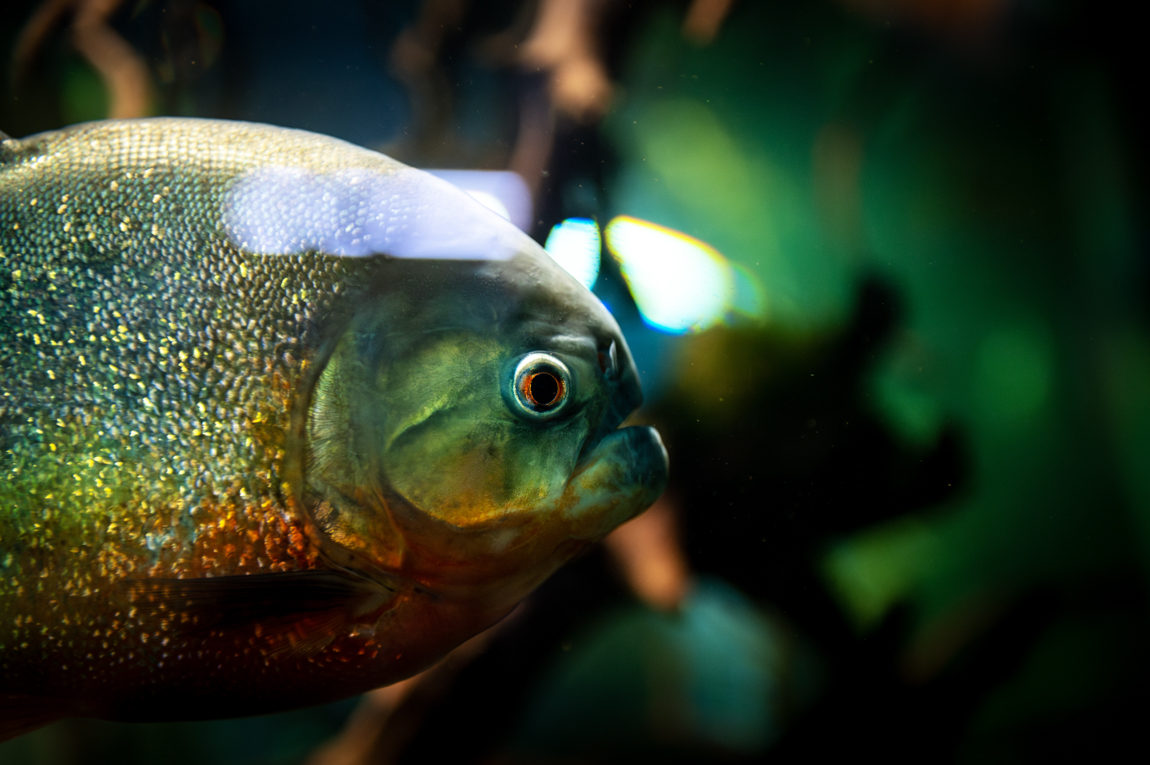
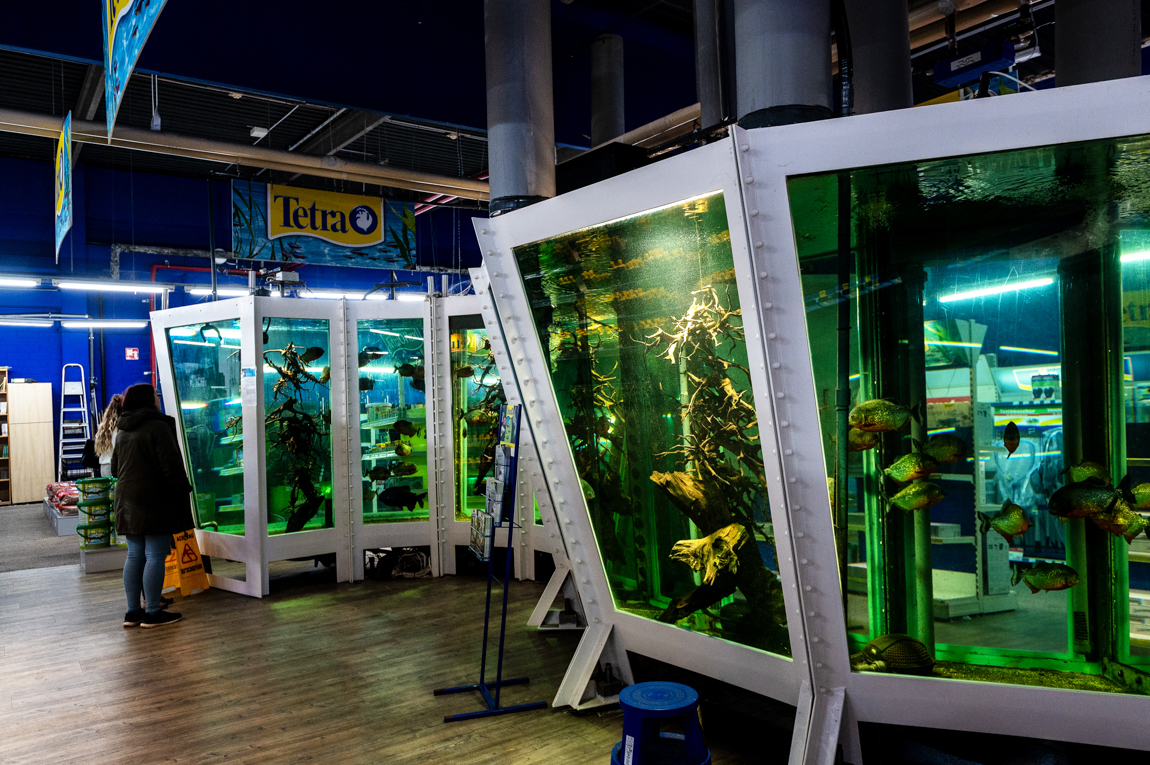
Duisburg has its own zoo, and it’s probably decent. However, did you know you can also watch animals here without having to spend a penny on it? After all, Duisburg is home to the largest pet shop in the world. It’s called Zoo Zajac, and it’s located just outside the city centre. The store is the size of four giant supermarkets and the owner was – until he suddenly died last year – an eccentric guy with a popular YouTube channel. When I came here on a Saturday afternoon, half the city seemed to be already present with their kids. The parking lot and the surrounding streets were filled to the brim. Well, there’s plenty to see here, so you can’t really blame them.
“Duisburg has its own zoo, but you can also come and watch animals without paying a penny for it. Zoo Zajac is the largest pet store in the world and is located just outside the city centre.”
The aquarium department is a paradise for someone like me who used to keep fish as a child. More than a thousand tanks are set up here. All standard species – both freshwater and saltwater – are on offer, but those looking for something a little more unique can also take home a pair of piranhas or even a full-sized ray. There are several showcase aquariums on display full of fish that are not sold, including an amazon tank larger than the one in the Antwerp Zoo. The terrarium section is perhaps even more impressive. Here you’ll see everything from geckos and turtles to meter-long constrictors, monitor lizards and even a few dwarf crocodiles – all in natural enclosures that offer plenty of space. Outside, half a farm’s worth of chickens and peacocks are waddling around. Of course, you don’t get to take everything home just like that. With every purchase, questions are asked about the conditions you can offer the animal and whether you know what you’re getting into. For the slightly more exotic creatures like pythons or crocodiles, the necessary licenses and permits must of course be submitted. You can’t put an animal like that in your bathtub.
PS: because so many people come here on weekends without buying anything, you can make a voluntary donation at the entrance, or come and eat something in the restaurant.
7. Tiger & Turtle: a rollercoaster for pedestrians
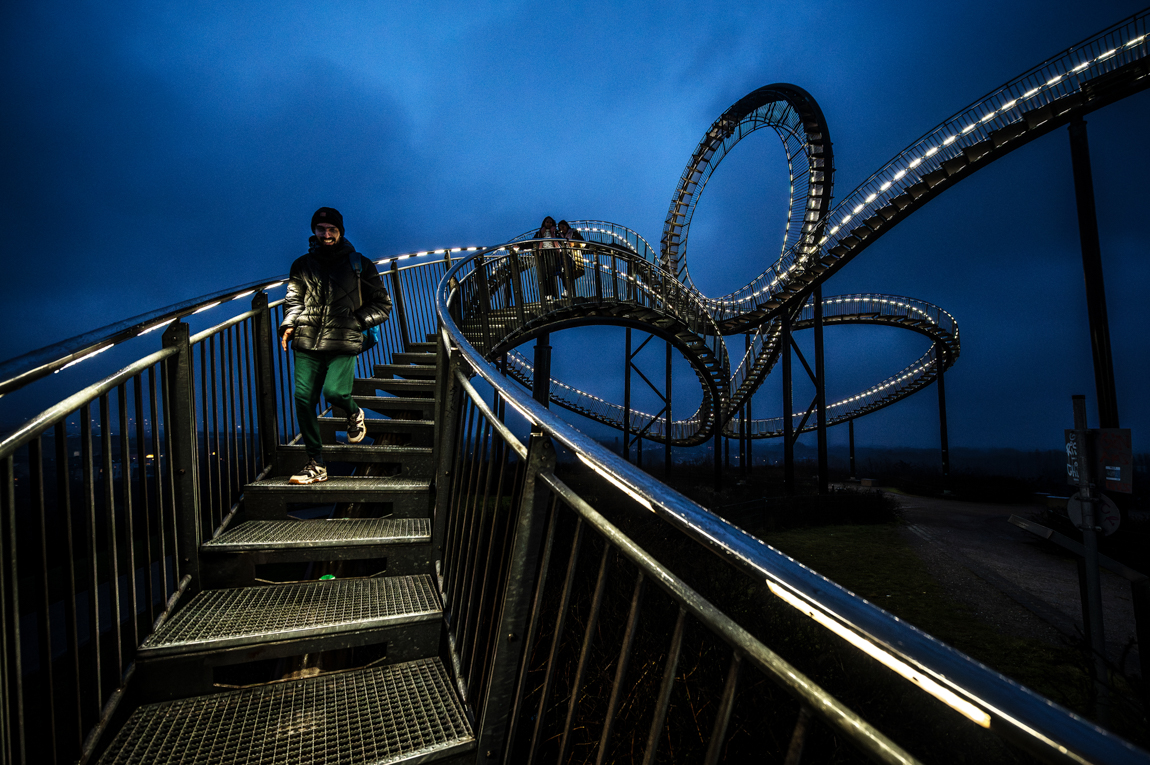
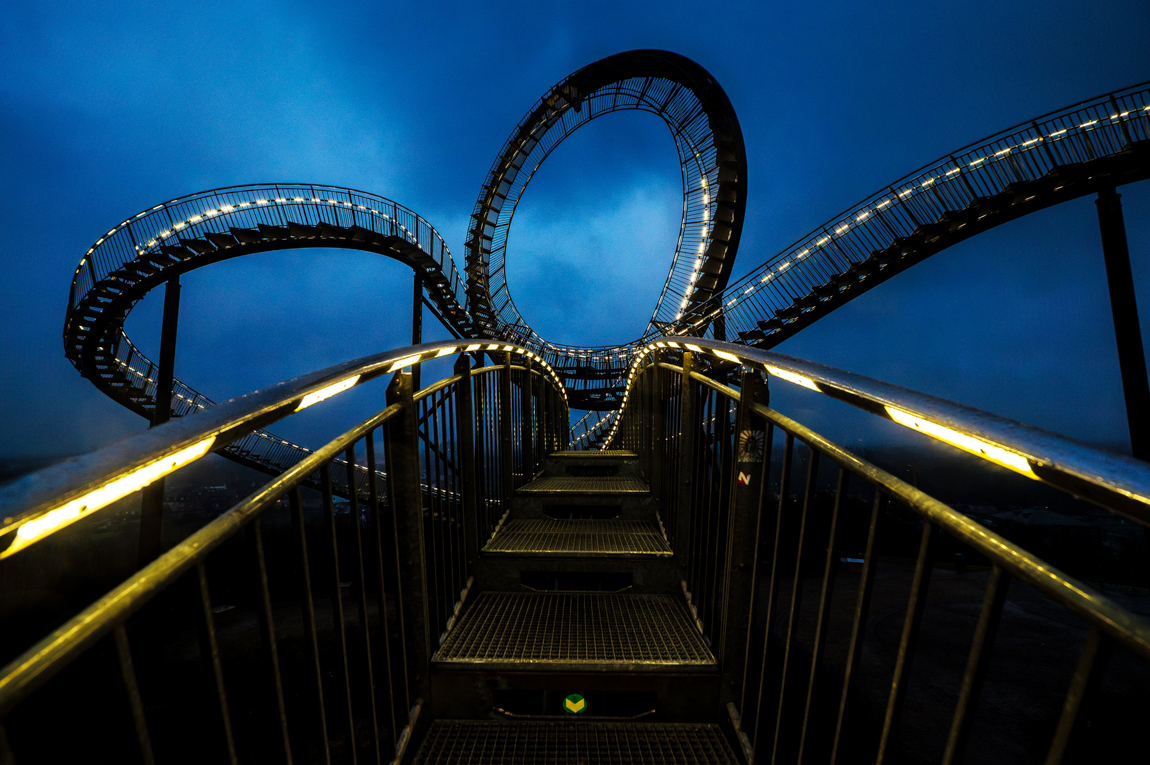
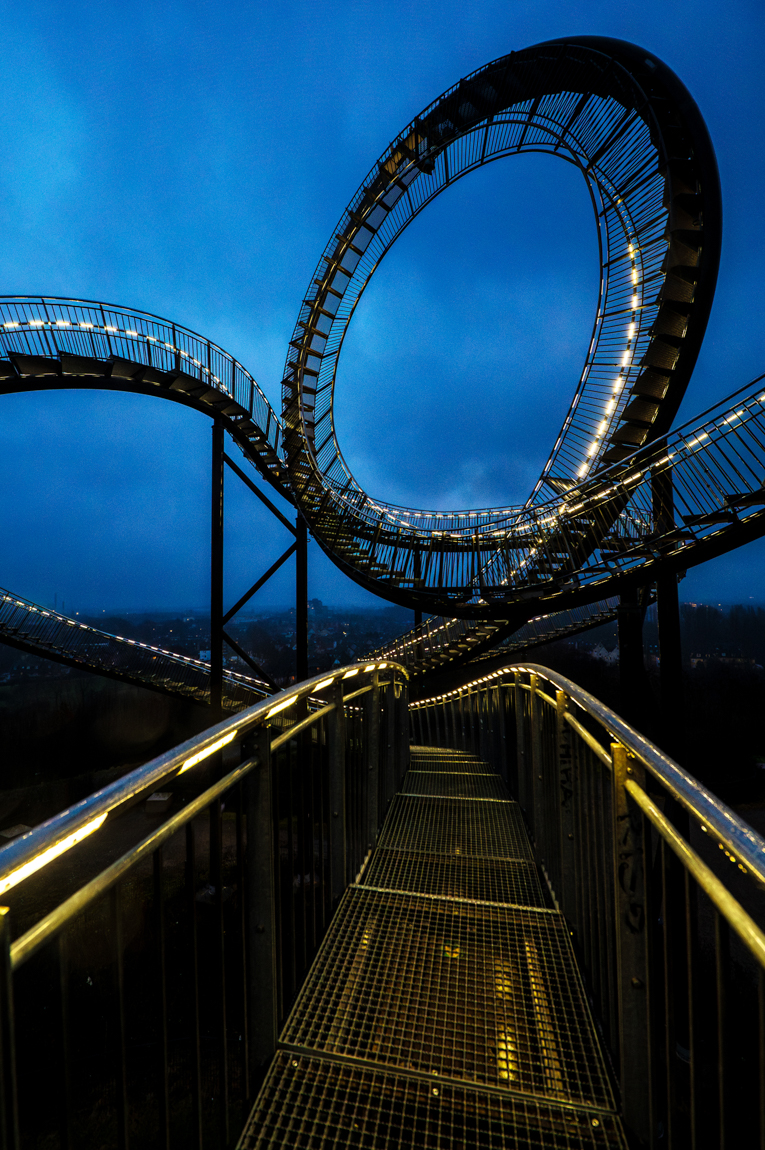
What do you do if you want to lure people to some forgotten corner of Duisburg, where there’s absolutely nothing to see outside of a dystopian factory landscape? Well, we don’t have to ask ourselves the question anymore: someone already had the answer to it built. Step 1: choose one of the many industrial waste heaps, clean everything up and name it Magic Mountain. Step 2: sow some grass onto it, plant a few trees and construct a nice winding path towards the top. Step 3: Have a public artwork built on the summit that looks so crazy that it makes international headlines. Step 4: Profit. That work of art is the now world-famous Tiger & Turtle: a twenty-metre-high rollercoaster for pedestrians – you read that right. You can walk over the whole construction – except of course for the looping: gravity is still a thing and putting monkey bars under it was considered a tad too risky. In the evening, the entire artwork is lit up by hundreds of LED lights, so that it can be seen from miles away and you can take fantastic pictures. A place where no one wanted to go – let alone in the dark – was transformed into a meeting spot where locals come to picnic and enjoy their summer evenings, while tourists come from far and wide to see it. Cleverly done, and it’s completely free of charge.
Hotels in Duisburg and extra information
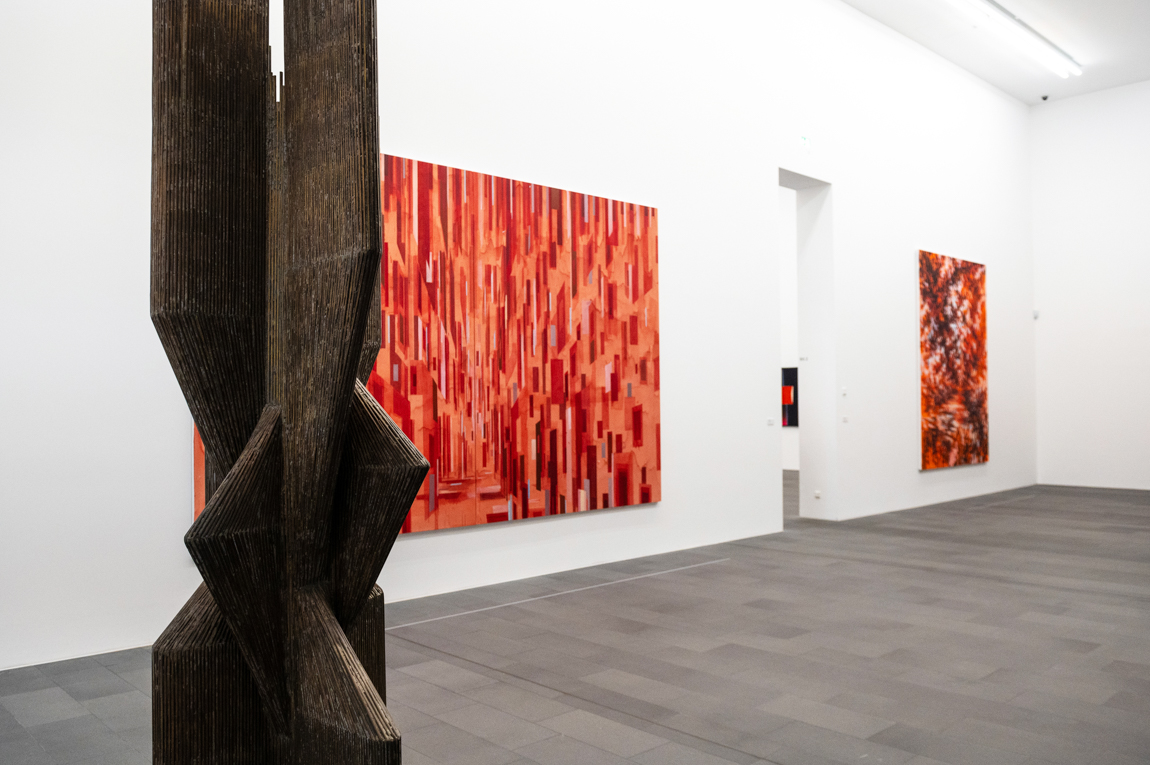
I stayed at the Intercity Hotel Duisburg. It’s right on the main station square and has its own parking lot (€19 per day).
For more information on Duisburg as a destination, click here.
Fancy some other European trips? Then read my articles on Dresden, the Elberadweg, Warsaw, Lodz, Scotland, Croatia and Noordwijk.




















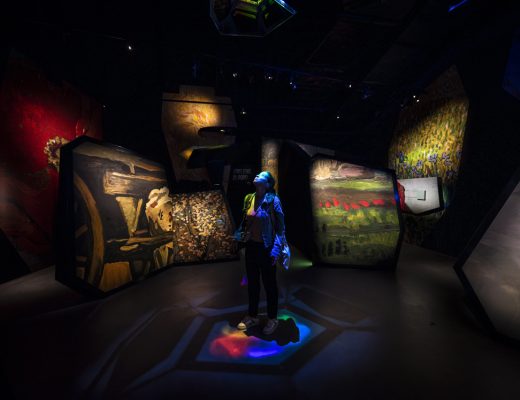

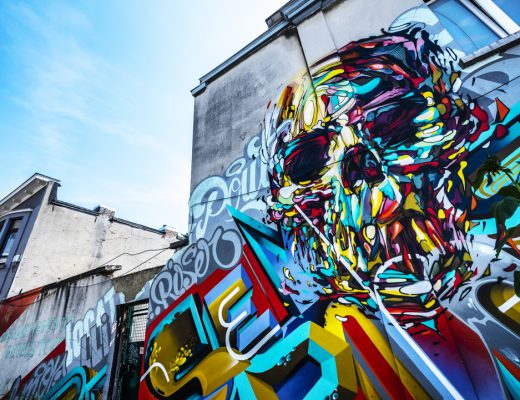

2 Comments
Kelly Achten
February 17, 2024 at 12:29 amHoi Jonathan, altijd leuk om je verslagjes te lezen. Mijn ‘want to visit’ lijstje op google maps wordt steeds langer en langer 😉 1 opmerking (maar ik weet niet of je dat kan veranderen…) in de mail, zowel op pc als op mobiel staan de foto’s altijd onderaan na de volledige tekst en dus niet zoals op de pagina tussen de tekst.
Jonathan
February 17, 2024 at 10:32 amHey Kelly,
Merci om het te melden. Had het nog niet opgemerkt. Zal de webmaster eens contacteren. Kunt ondertussen best gewoon op de titel drukken zodat je op de eigenlijke pagina terechtkomt.